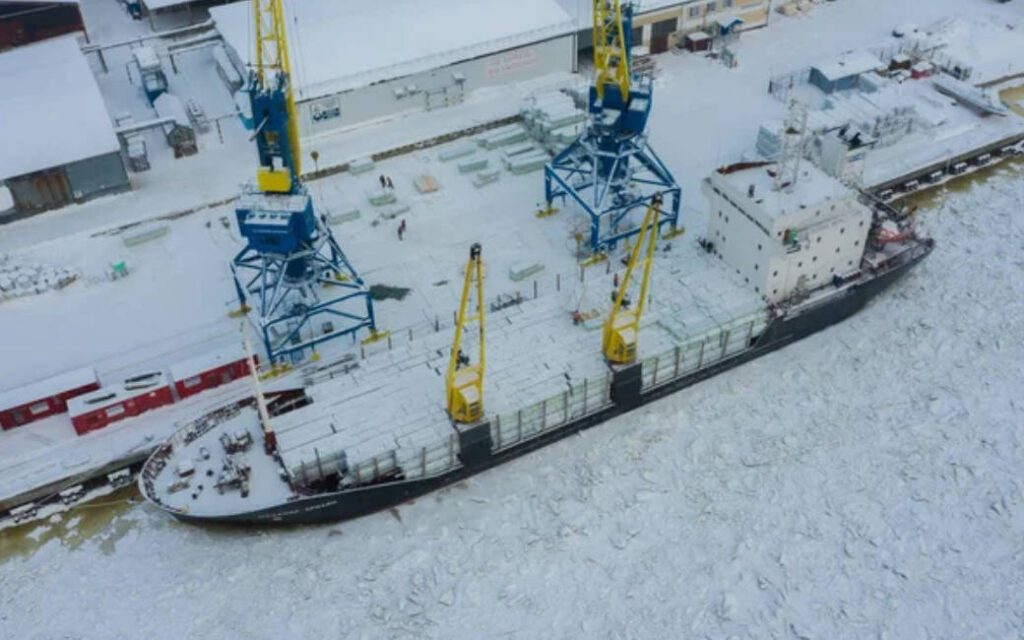A new deep sea port and terminal is to be constructed in Russia’s northern Arkhangelsk Port, according to the key provisions of the Comprehensive Development Plan of the Arkhangelsk Transport Node. The plan details Arkhangelsk development to 2035.
The full text of the document (in Russian) can be found here.
The construction of the new port and terminal is the main part of this development, and covers an area including Dwinsky Bay in the White Sea, the north Mudyug Islands, and the land area to Kuya, all of which will be a deep-sea marine area. It is planned that estimated throughput the new terminal will amount to 25 million tons a year by 2040.
The construction terminal and the deep sea area will be built in several stages. During 2025–2026, the project documentation should be completed, and construction started. The new terminal and deep sea operations of the new Arkhangelsk port is scheduled for 2031.
The plan also provides for the construction of a specific terminal for the shipment of lead-zinc concentrate, which is planned to be operational in 2026.
The plans also include coastal construction and reconstruction infrastructure in Arkhangelsk for parking of marine rescue vessels and parking of hydrographic and pilotage ships in the seaport of Arkhangelsk. A significant part also includes updates to the icebreaker fleet and ice class vessels. New ships must provide access to hard to reach meteorological work Roshydromet stations and maintenance environmental monitoring in the Arctic.
Another key part of the is to develop railway and road infrastructure, in particular construction new access roads and bridges to current and new marine terminals port of Arkhangelsk. These include modernization and expansion of the railway station capabilities at Solombalka, road bridge repairs across the Povrakulka and Solombalka Rivers and a new bridge construction over the Kuznechihu River. The Russian Ministry of Transport will be responsible for the completion of these facilities.
In 2023, the Arkhangelsk transport hub handled 6.5 million tons of various goods, with the plans expected to see this triple. This will the implementation of numerous large industrial projects, create new employment and the operation of new transshipment and production facilities.





